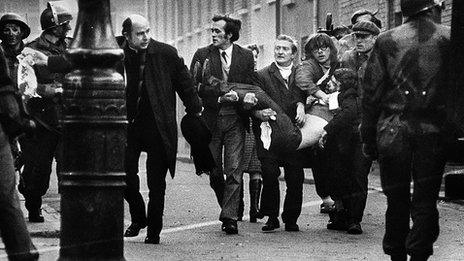Museum of Free Derry opens after £2.4m refurbishment
- Published
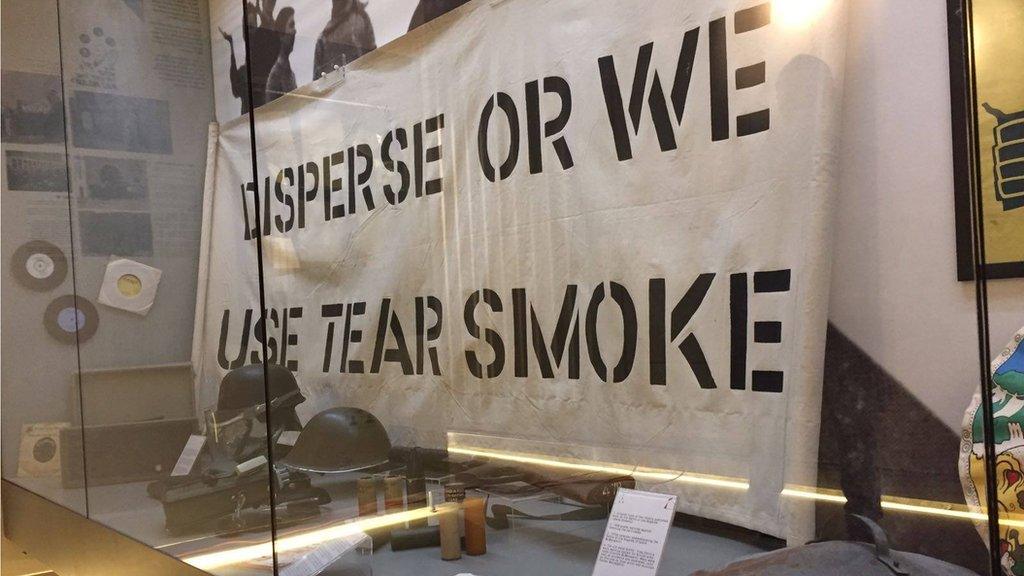
Most items of historical significance were donated by local residents
The new Museum of Free Derry has opened its doors to the public after a £2.4m refurbishment and extension.
Located in the heart of the city's Bogside, the new building shines a spotlight on the civil rights campaign of the 1960s and The Troubles.
Visitors can enjoy a new multi-media exhibition and artwork based on key events, such as Bloody Sunday.
Museum manager Adrian Kerr said it had been a long, hard road, but that it was "worth the wait".
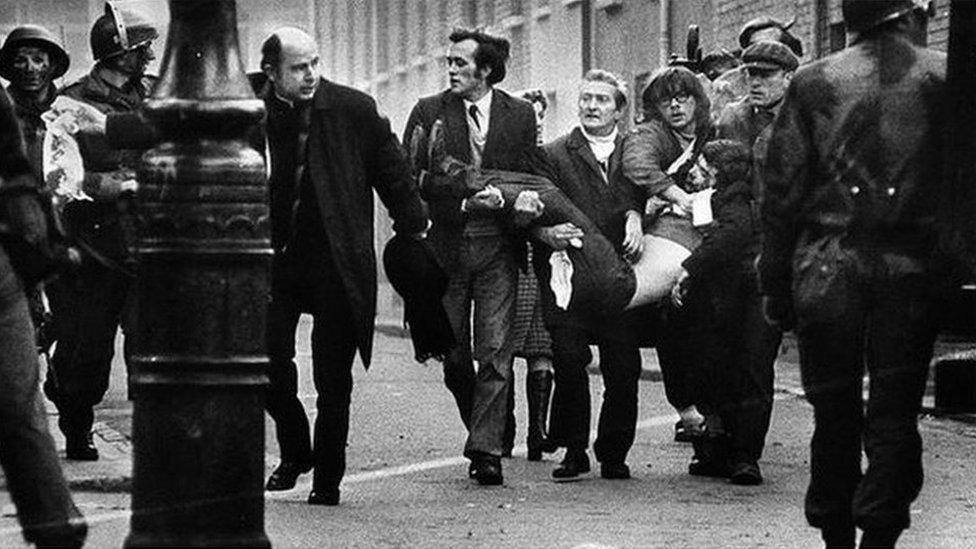
Thirteen people were killed on Bloody Sunday and another died some months later
A number of exhibitions tell the people's story of the civil rights movement, the Battle of the Bogside, internment, Free Derry and Bloody Sunday.
On 30 January 1972, 13 civil rights marchers were shot dead in Derry by the Army in what became known as Bloody Sunday. Another died from his injuries a few months later.
In 2010, the Saville Inquiry found that the 14 demonstrators and bystanders were killed without justification.
Last year, the retired Bishop of Derry, Dr Edward Daly, a photograph of whom became the iconic image of that day, died aged 82.
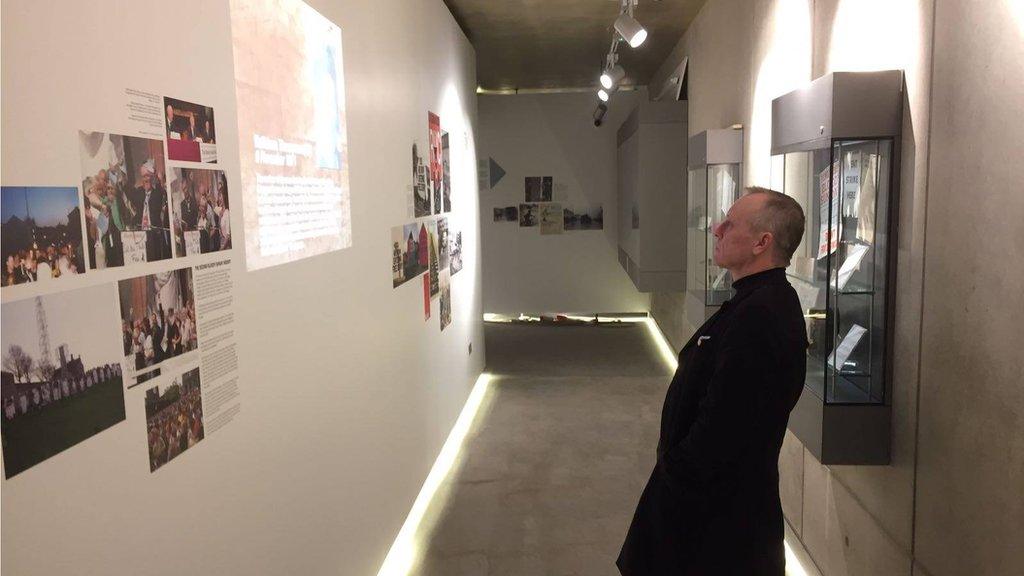
The museum focuses on the city's civil rights and early conflict era
"We are all thrilled that the new museum is at long last ready to open," Mr Kerr said.
"It will allow us to do a lot more work in educating people about this very important era in our history, and will make a visit to the museum a much more rewarding and stimulating experience for all visitors, be they from the city or from across the world.
According to Mr Kerr, the museum's previous incarnation catered for about 160,000 visitors, a figure he is hopeful of improving upon.
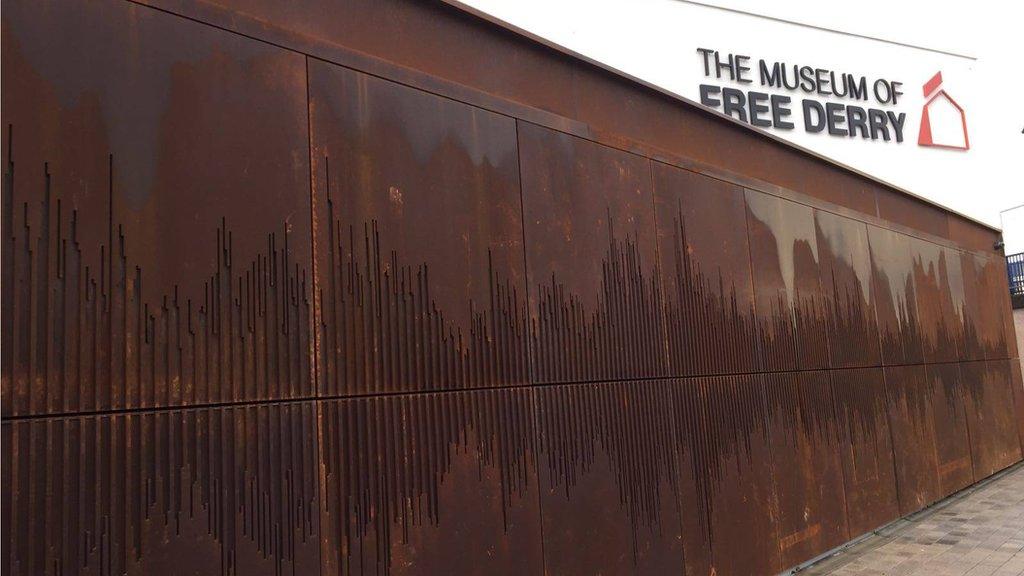
The outside wall shows a sound wave of 'We Shall Overcome'
The artwork on the front wall of the museum was created by local artist Locky Morris and is entitled 'We Shall Overcome'.
It uses the actual sound waveform of the moment on Bloody Sunday when the crowd sang the civil rights anthem.
Those 21 seconds have been 'cut into' the fabric of the building and are intended to be seen as a "paean to community resistance amidst deadly force".

This banner was carried on a number of marches demanding better conditions for the Catholic minority in Northern Ireland
One of the many iconic items held by the museum is the Queen's University Civil Rights Association banner.
It was dropped in the derelict house at Free Derry Corner as the students fled the gunfire of Bloody Sunday.
It was later found by a local boy, Hugh Doherty, who kept it in his attic for 30 years, before donating it to the museum.
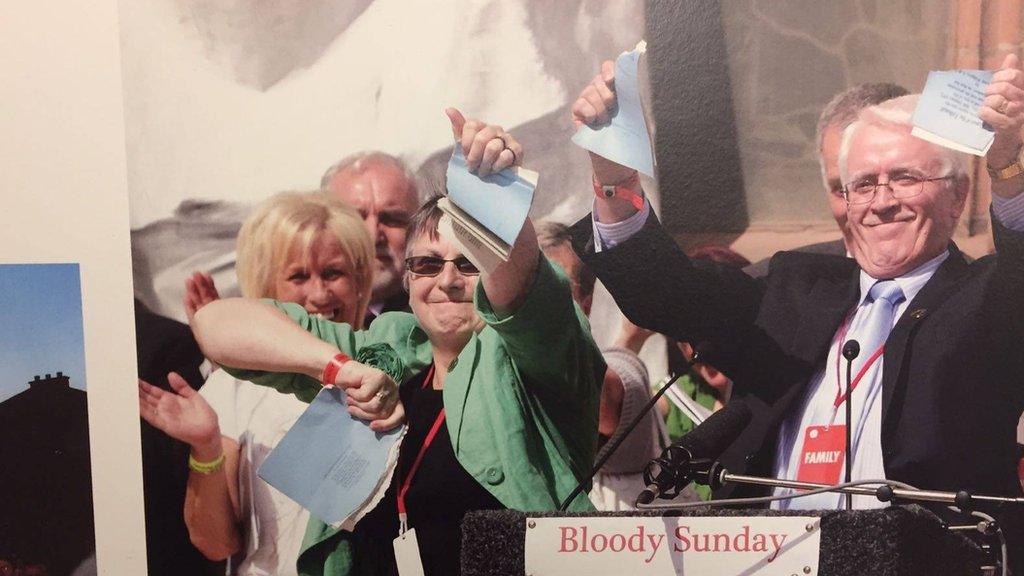
This picture captures the moment the families of Bloody Sunday received an apology from Prime Minister David Cameron
The museum was funded by a range of agencies, including Derry City and Strabane District Council, the Heritage Lottery Fund, Tourism NI and the Northern Ireland Executive.
Mr Kerr said he wanted to thank all those who helped make it possible.
"We would also like to thank the residents of Glenfada Park and the surrounding areas for their patience and support during the building work and all the disruption that it caused, and the many people, including elected representatives, from across the city who have worked hard to help us achieve this," he said.
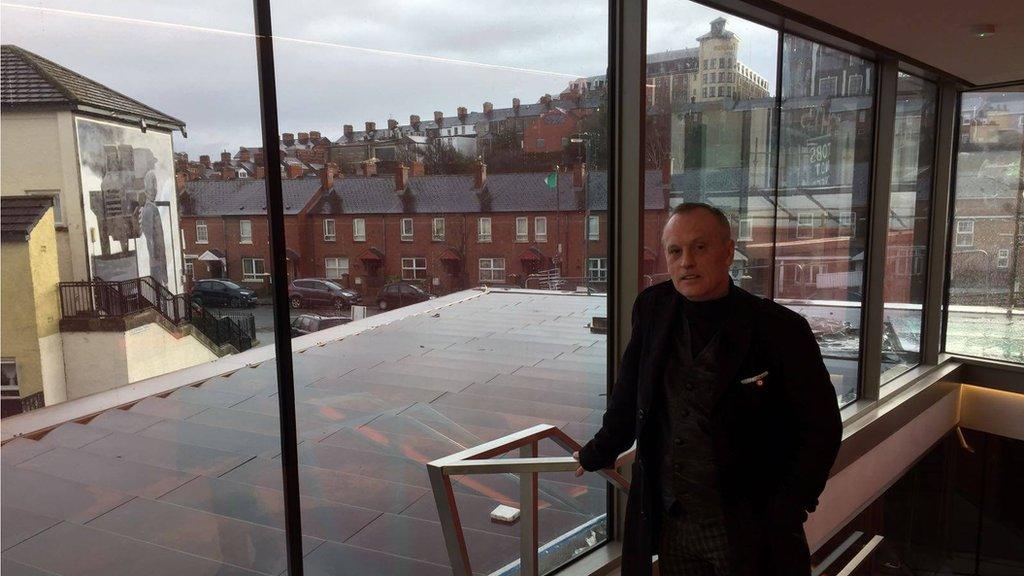
Adrian Kerr believes the new museum will attract thousands more visitors
- Published27 October 2016
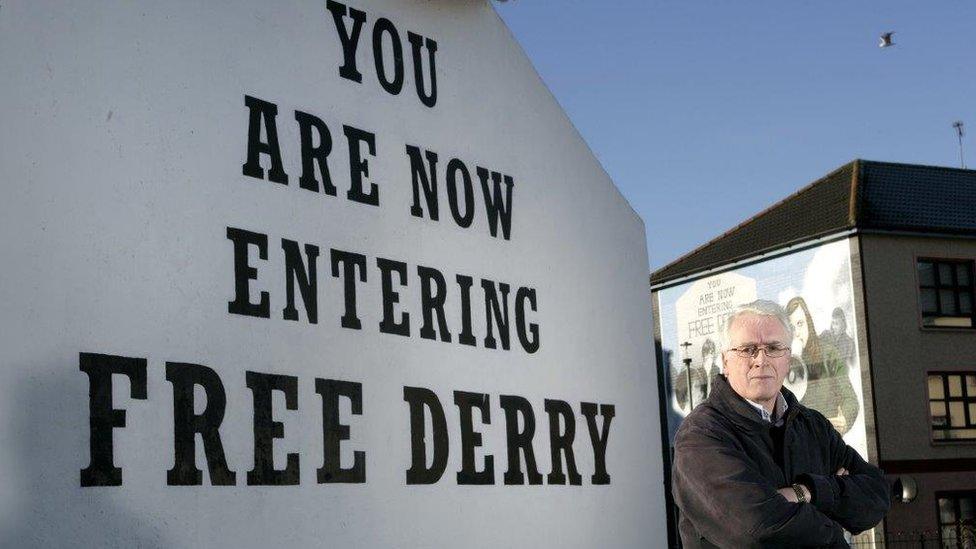
- Published25 January 2016
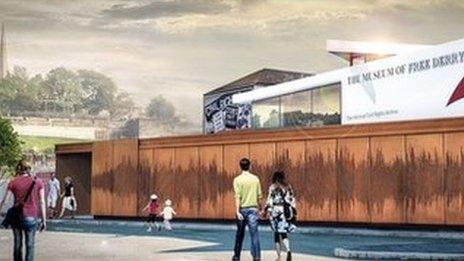
- Published17 June 2014
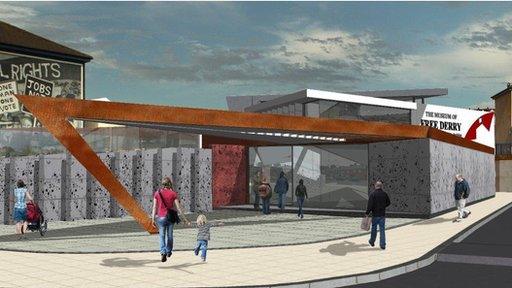
- Published31 January 2012
